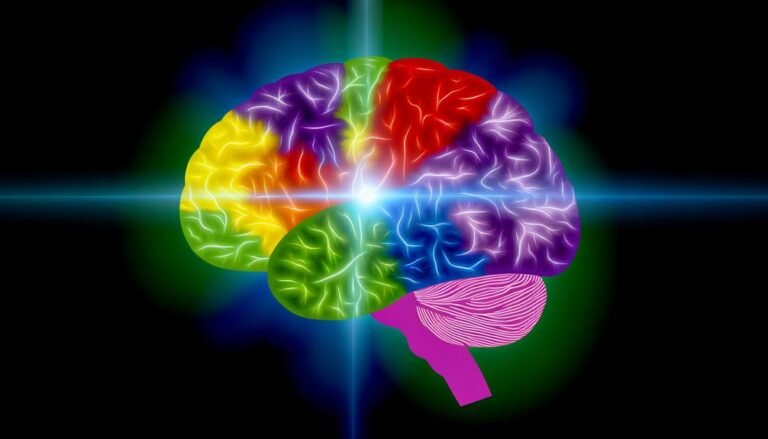Unleashing Competency: Key to Workplace Success
Competency, often regarded as the linchpin of organizational achievement, stands as a fundamental element in driving workplace success.
The intricate interplay between skills, knowledge, and behaviors underscores the significance of honing competencies for sustained growth.
As businesses navigate the evolving demands of the contemporary corporate arena, the ability to unleash and cultivate competencies emerges as a critical determinant of competitiveness and adaptability.
Stay tuned to discover how organizations can strategically harness the power of competency frameworks to propel their workforce towards unparalleled success in today's dynamic professional landscape.
Key Takeaways
- Competency is pivotal for workplace success, aligning skills and behaviors with job requirements.
- Development strategies bridge skill gaps, enhancing performance and productivity.
- Assessments and frameworks guide talent management, ensuring organizational goals are met.
- Utilize resources for competency growth, fostering a culture of continuous learning and development.
Definition and Importance of Competency
Competency, a multifaceted amalgamation of behaviors, skills, knowledge, and abilities, stands as a cornerstone for individual and organizational success in the workplace. Competency assessment plays a vital role in talent identification, ensuring that employees possess the required proficiencies for their roles.
Assessing competencies through methods like self-assessments and performance reviews enables organizations to identify strengths and areas for development. This process not only aids in aligning individuals with suitable roles but also contributes to succession planning and career growth.
Competency Development Strategies
To enhance organizational performance and nurture employee growth, strategic competency development strategies are essential in today's dynamic work environment. Skill enhancement is a critical aspect of these strategies, focusing on identifying skill gaps and creating tailored learning plans to bridge them effectively. Methods such as training programs, workshops, mentoring, and on-the-job experiences play a vital role in skill development. Feedback and coaching are integral for continuous improvement. These development initiatives should align with organizational goals and individual aspirations, emphasizing the importance of continuous learning in a rapidly changing work landscape.
| Competency Development Strategies | Description |
|---|---|
| Skill Enhancement | Identifying skill gaps and creating learning plans to bridge them efficiently. |
| Learning Plans | Training programs, workshops, mentoring, and on-the-job experiences for skill development. |
Assessing Competencies for Growth
Effective assessment of employee competencies is pivotal for fostering strategic growth within organizations. Assessing potential and identifying areas for performance improvement are key components of this process. By evaluating competencies through methods like self-assessments, peer evaluations, and performance reviews, organizations can gain valuable insights into their employees' strengths and development areas.
This assessment guides career planning, succession management, and ensures that employees meet job requirements effectively. Furthermore, it provides a foundation for targeted training and development initiatives, aligning individual skills with organizational goals. Through rigorous competency assessments, organizations can optimize talent management strategies, enhance workforce performance, and ultimately drive sustainable growth and success.
Implementing Competency Frameworks
Implementing competency frameworks involves strategically aligning organizational roles and expectations to enhance talent management and development initiatives. Framework alignment ensures that competencies are integrated into job roles, assisting in performance evaluation and goal setting.
By defining clear expectations and skill requirements, organizations can effectively assess employee capabilities and provide targeted development opportunities. Implementing competency frameworks also supports consistency in recruitment, training, and succession planning, ultimately contributing to organizational success.
Regularly updating and communicating these frameworks, along with providing relevant training, are crucial for their successful integration. Through this strategic approach, organizations can create a culture of continuous learning and improvement, driving higher levels of performance and employee engagement.
Key Competency Models Overview
Upon establishing a foundation for implementing competency frameworks within organizations, a critical aspect to explore is the overview of key competency models that drive success in various job roles.
Competency models outline the essential competencies, skills, and behaviors required for effective job performance. Through competency assessment, organizations can evaluate individuals' proficiency levels using methods such as self-assessments, peer evaluations, and performance reviews.
Competency mapping categorizes these competencies into specific task categories, making them more tangible and easier to define. By utilizing accessible language and tools like tables, organizations can facilitate discussions and generate support for competency initiatives.
Understanding and implementing these key competency models are crucial for aligning talent with organizational goals and driving success in the workplace.
Categorizing Competencies for Clarity
One effective approach to enhance understanding and organization of competencies is categorizing them based on specific task categories. Competency classification and skills taxonomy help in structuring competencies effectively.
Proficiency segmentation allows for a clear delineation of skill levels, aiding in targeted development efforts. Behavior categorization further refines competencies by focusing on the actions and attitudes required for success in a particular role.
Leveraging Resources for Development
To optimize competency development within an organization, harnessing available resources strategically is paramount for fostering continuous learning and professional growth. Resource utilization plays a vital role in competency building by providing avenues for skill enhancement and creating effective learning pathways.
Organizations can leverage various tools such as ATD memberships for career acceleration and access to competency model development insights through webcasts, whitepapers, and case studies. Job aids can also be utilized to overcome challenges in building competency models, facilitating continuous learning and development.
Enhancing Workplace Success Through Competency
Enhancing workplace success through competency requires a strategic focus on aligning individual skills with organizational objectives to drive performance and productivity. Improving performance hinges on identifying and developing key competencies that directly impact job roles.
Talent identification plays a crucial role in matching employees' skills with the demands of their positions, thereby fostering a more efficient and effective workforce. By honing in on essential competencies, organizations can ensure that employees are equipped to meet job requirements and contribute meaningfully to overall success.
This targeted approach not only enhances individual performance but also elevates team dynamics and organizational outcomes. Emphasizing competency development and talent identification is instrumental in creating a high-performing workplace culture that thrives on continuous improvement and achievement.
Conclusion
In conclusion, competency serves as a critical foundation for organizational success, driving innovation, productivity, and sustained growth.
While some may argue that competency development is time-consuming and resource-intensive, the long-term benefits of aligning individual proficiencies with strategic objectives far outweigh the initial investment.
By implementing structured competency frameworks, businesses can effectively nurture their workforce, enhance workplace success, and adapt to the ever-evolving demands of the modern workplace.







